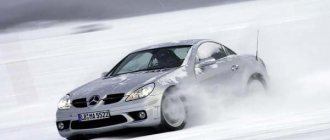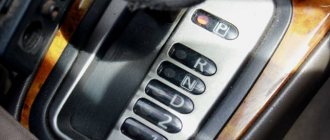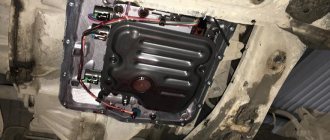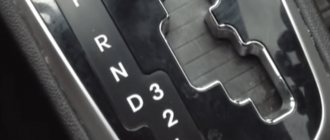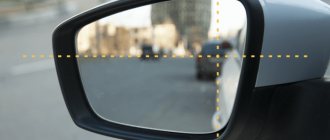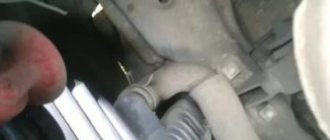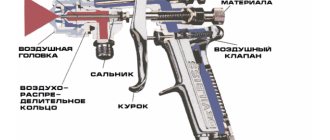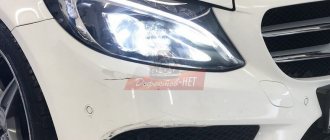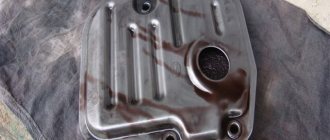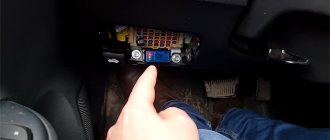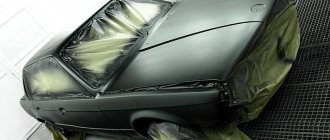Turning will not cause the slightest difficulty for an experienced driver. But in order to get a feel for the car and learn how to take turns well, you need to take more than one driving lesson, not one hundred kilometers, and for some, more than one month. But this is only if your driving instructor was not very good. Like mine.
Yes, when we were filming the video “Turning the Car,” I remembered my first months of driving. And I couldn’t understand why, after turning, my car was moving like a snake? I clearly understood that this was not right, but I couldn’t do anything about it... And only now I understand that I had to hold the car after the turn in order to have time to align the wheels.
Therefore, in our driving courses, all programs begin with the fact that the driving instructor evaluates your cornering skills and how you feel the steering wheel. These basic skills must be instilled in you correctly, and at the very beginning.
Agree, you will never say that a great driver is driving ahead if he swerves after a turn, or even worse, he hits the curb... Let's figure it out, our dear novice driver, what you need to know about the turn.
1. You should always slow down before turning. Moreover, you need to slow down in advance, on a flat section of the road, and not when turning, in a panic that you are flying into the oncoming lane.
2. The speed of entering a turn must be such that you can cope with the turning radius, the steering wheel, control and allow pedestrians to pass after the turn.
3. The sharper the turn, the lower the speed of the car should be, and the greater the turn of the steering wheel, and, accordingly, the wheels.
4. If you are driving along the highway, or are sure that there are no pedestrians around the bend, then at the point of intersection of the bisector of the turning angle, you can press the gas and start accelerating the car.
5. When you do not know the radius of the turn, you need to reduce the speed to such a level that you can enter any, even the sharpest turn.
6. You cannot twist your hands on the steering wheel when turning, you cannot move the steering wheel with small movements, as if “mincing around the steering wheel.” We are preparing a video on how to hold the steering wheel correctly and how to intercept it when turning. It will appear on our YouTube channel soon. Friends, subscribe!
7. Always make a right turn from the rightmost lane, and a left turn from our leftmost lane. Remember about oncoming traffic. On two-way roads, we remember that the right half of the road is ours, the left half is someone else’s. On one-way lanes, our left lane is the farthest left (at the curb), because the entire road is ours.
8. When we want to make a turn, we do not drive close to the curb. The optimal distance from the edge to the wheels of the car is 50-70 cm. When turning, the rear wheels always cut the trajectory in the direction of the maneuver. And if your car is close, when turning, you can scratch the rear discs, or run your rear wheel onto the curb.
9. After turning, do not forget to align the car's wheels. The most common mistake a novice driver makes is driving onto the curb after a turn.
10. After turning, it is necessary to level the car without jerking or snakes. A novice driver, or a student, can only do this at low speed and in a controlled car.
11. With experience, I recommend using controlled throttle to enter a turn. For inexperienced drivers, before turning, we give the car inertia, push it with gas, and move our foot over the brake. Just don’t brake, but hold it over the brake, getting ready to slow down after the turn in order to align the wheels and allow pedestrians to pass.
12. And we remember that in the city, around every turn, a pedestrian is hiding and tries to throw himself under your wheels!
Manual transmission - manual gearbox
A manual transmission is one of the most important components of a car; its main task is to receive, change and transmit torque from the engine to the wheels.
In simple terms, it allows the wheels of the car to rotate at different speeds at the same engine speed. Many motorists may have a reasonable question: what is this mechanism for? After all, the speed of a car depends on the force of pressing the accelerator, and it would seem that you can connect the motor directly to the wheels. But motor units operate in the range of 800-8000 rpm. And when driving - in an even narrower range of 1500-4000 rpm. If you run too long at low speeds (less than 1500), the engine will quickly lose performance because the oil pressure will be insufficient for lubrication. And long-term operation at too high speeds (over 4000) causes rapid wear of components.
Let's look at how the gearbox changes the speed of the car:
- the engine rotates the crankshaft and drive shaft during operation;
- this movement is transmitted to the manual transmission gears
- the gears begin to rotate at different speeds;
- the driver engages the selected gear;
- a given rotation speed is transmitted to the cardan shaft and wheels;
- the car starts driving at the required speed.
In other words, the gearbox is designed to ensure the selection of the appropriate mode of engine functionality in different road conditions - acceleration, braking, smooth driving, etc. In a manual transmission, the procedure for changing gears is performed by the driver manually, without the use of auxiliary devices.
How to brake correctly: in the city, on the highway and even in a high-speed turn?
As it turns out, correctly calculating the distance and dosing the effort on the pedals is not so simple. In the last article, our expert, safe driving instructor Ivan Chuzhmar already talked about correct steering . Now let's focus on deceleration and braking.
How to slow down properly?
Let's start right away with specific practical advice. If the car is equipped with a manual transmission, then when slowing down smoothly before a traffic light, we can help ourselves if we do not disengage the clutch. The car will be slowed down by an "engine braking" effect. On modern engines (especially small-volume and turbocharged ones) it is no longer as noticeable as on old ones, but still.
True, I won’t recommend switching “down” before a traffic light. This is of little use, but there is an additional load on the synchronizers. This technique only works on long descents outside the city.
Rational use of the engine deceleration effect will also allow you to save, albeit a little, on fuel, brake pads and discs. Considering that we make dozens, or even hundreds of brakes a day, the savings will be quite good.
With an automatic transmission, this advice does not apply - if you have hydromechanics, then you will not be able to open the clutch, but if it is a robot, then, on the contrary, it will forcibly disengage the clutch - that’s the algorithm.
The braking method itself can be described as follows. We begin to reduce the speed, create a smooth force on the pedals and reduce the main speed so that closer to the stopping point, the pedal is slightly released and rolled at minimum speed. And don’t push hard, as many people do, as a result of which the car “nods” before stopping. Professional drivers develop the habit of working the brake pedal so accurately that the car stops even without the slightest “peck.” Try this, you probably won’t succeed the first time!
Why is this even necessary? First of all, of course, for the sake of passenger comfort. Drivers get used to it and don’t notice this constant jerking of the car when it comes to a complete stop, but it makes passengers feel sick. But there is also a “second stage”. By slowing down in advance, you leave yourself room to correct the error in predicting the traffic situation.
For example, the road is dry, but just before the intersection there is a puddle, and also frozen. If you are used to braking sharply and with a “peck,” then you simply will not have the opportunity to stop where you intended. And you can consider yourself lucky if in such a situation you crashed into the back of a car, and did not fly into a zebra crossing along which people are walking.
In general, in general, it is very useful to have time to react when approaching an intersection. In addition to an icy puddle, a sudden obstacle can be a pedestrian, a dog, or a car that decides to change lanes.
But in addition to obstacles in front, there are also excessively fast cars behind! By braking smoothly in advance and monitoring the situation behind the stern in the mirrors, you significantly reduce the risk that you will have to find out the cost of the rear bumper, trunk lid and lights.
A little about distance and braking distance
At first glance, everything is elementary. The distance should be such that you have time to brake if any emergency occurs. How can you figure out how many seconds of time and meters of distance it will take to stop? To do this, everyone, without exception, is recommended to conduct a simple experiment: brake to a complete stop, and not smoothly, but urgently. If the car has ABS, it should work.
It is generally better to conduct such experiments regularly: on dry asphalt, on wet asphalt, on ice, on snow... This way you will have practical knowledge of how far your car can go with the brake pedal pressed to the floor. The results, from experience, can be surprising.
But besides everything else, it would be nice to know a little theory. Firstly, the braking distance is determined by law. According to the standard, from 80 km/h the braking distance should be no more than 36 meters. Also a little physics: if the speed doubles, then the braking distance increases by four, proportional to the square of the speed. Take this factor into account if you like to speed.
Since any car undergoes mandatory certification in Russia, provided that the braking system is fully operational (which, by the way, is not always the case), most likely your braking distance from 80 km/h really should not exceed 36 meters. But how much do these numbers tell you? Hardly. Therefore, in practice, braking distance should be measured not in meters, but in seconds. It is impossible to count the number of meters by eye, but anyone can time it.
And before I move on to my conclusions regarding a safe distance, a little more theory. The total time spent on the braking process is the sum of several quantities. Firstly, this is the driver’s reaction time - it depends on age, fatigue, emotional state, concentration and, finally, skill. Secondly, this is the response time of the brake drive - usually hydraulic. Thirdly, before the brakes begin to work with maximum force, it must gradually increase.
In my personal experience, driver reaction is up to 1.5 seconds, and the brakes grab in about 0.5 seconds. Plus, you must have a reserve of at least 1 second. The total is 3 seconds - this is exactly what your safe distance should be, determined by me in a practical way. How to measure it?
There is a simple method. Moving in the flow, select some stationary object: a tree, a pole, a manhole cover or a marking, for example. Record the moment when the car in front of you reaches this object with its rear bumper. From now on, start counting in your head: 221... 222... 223... Yes, yes, that’s right, because “1, 2, 3” can be said very quickly. On the count of “223”, no earlier, you must align your front bumper with the object. Perform this simple “test” several times and over time you will learn to keep the three-second distance automatically.
Common mistakes
The most common mistake that can end in disaster is speeding when cornering. Too much speed leads to loss of control, the car begins to throw, and as a result is thrown off the road. On a slippery road, a car may simply refuse to turn and fly straight into the bushes on the side of the road. To avoid this, it is better to play it safe and slow down to a minimum than to get into an accident. It’s not for nothing that bikers have a saying “if you can go at a certain speed, then it’s better to go 2 times slower.”
Another common mistake
is an attempt to play with the pedals and gear lever right in the turn. If you squeeze the clutch, the relationship between the engine and the wheels is disrupted, which leads to a decrease in the controllability of the car. In cornering conditions, this can lead to complete loss of control. Pressing the brake pedal in a car with an automatic transmission works in exactly the same way, only in this case there is also a risk of skidding. Any impact on the brake pedal while the wheels are turned can lead to skidding of the rear axle.
Sometimes, beginners make mistakes when working with the steering wheel. You don't want to go into a turn at too steep an angle, unless that's the only way to get into the turn. The best way to enter a turn is to turn the steering wheel smoothly. When turning right, your hands should be at the 8 and 12 o'clock positions on the steering wheel. If we turn left, then at 4 and 12. This will allow you to control the steering wheel with maximum efficiency. You should not make sudden movements; you should enter the turn in a gentle arc. It is forbidden to hitch into the oncoming lane. If oncoming traffic appears there, it will be very difficult to avoid a collision. It is also not recommended to drive along the side of the road, especially at high speed. It's all about the different coefficient of road grip; if one wheel has this indicator reduced, then there is a possibility of losing control of the car.
Conclusion
. Every year hundreds of young drivers take to the roads. Unfortunately, training in driving schools is far from ideal. Therefore, beginners are left with many questions. One of them is how to properly enter a turn with a manual or automatic transmission. In fact, there is not much difference in cornering here. But, there are some differences in the process of driving a car, which, in principle, can affect cornering. It is advisable for the driver to know all these nuances.
Top 10 signs of a faulty gearbox
Mechanical faults in a car, unlike faults in electronics, appear accompanied by extraneous sounds and vibrations, which signal to the average person that something is not working as intended by the designers. Breakdowns in the gearbox are often accompanied by signals that cannot be ignored.
If the gears are switched with effort or are not switched at all, a strange hum and buzzing is heard from the box, or shocks are felt when changing gears, immediately contact a service station for repairs. Driving such a car is, firstly, dangerous, and secondly, you can end up on the highway with a jammed transmission. For serious repairs, the box will have to be removed and opened, so the pleasure is expensive.
After consulting with 13 service station employees, we identified 10 common signs of gearbox failure, tried to explain their cause, and compiled instructions for further action.
TRANSMISSION LEVER REFUSES TO Shift
Since the early 90s, the share of manual transmissions has been declining.
In 2006, in the United States, mechanics could be ordered on 47% of showroom cars. In 2011, there were already 37% of them, and according to the results of the first half of 2021, only about 27%.
If you look at sales, then in 1992 this type of box was chosen by 25% of buyers, in 2012 - 7%, in 2021 - only 3%. In Japan, out of 20 buyers, 19 choose an automatic, and according to experts, this share will only decrease, even in the sports car segment. Read about the disadvantages of manual transmission and the pros versus automatic here.
The excursion into the history of the death of mechanics is over, let's move on to box failures.
Symptom of malfunction: the manual transmission gear shift lever refuses to budge when the clutch pedal is pressed.
This happens when you try to engage first gear after stopping, or any other, up or down when changing gears.
Reason and solutions:
- Low transmission fluid level, incorrect viscosity (thickness) of the fluid. Add or change fluid.
- The shift cables or gear connections need to be adjusted.
THE SMELL OF BURNING IN THE CAR
Symptom of malfunction: If you smell burnt transmission fluid, the car's gearbox is overheated. Transmission fluid lubricates the moving parts of the gearbox and protects itself from self-burning by cooling in the oil receiver or heat exchanger. The oil receiver is installed in the pan of the car, the heat exchanger is located in the radiator area.
There are cars where the transmission is supplemented with a separate mini-radiator (oil cooler), which cools not only the transmission fluid, but also the gearbox itself.
Cause and solution: The cause of overheating is a low level of transmission fluid or its poor quality, that is, either the fluid is leaking or has become dirty due to poor filtration. To solve the problem, change the transmission fluid. When changing the fluid in the box, you need to know how much to fill. Since the old fluid is drained, the box is washed and emptied, it will absorb the filled liquid and its level will decrease until the box is saturated. Adding oil stops only when the level stabilizes and reaches the upper mark of the dipstick.
Read about how often you should change your transmission fluid here.
GEARBOX NOISE IN NEUTRAL POSITION
Symptom of malfunction: The car does not move, the transmission is in neutral, but an incomprehensible noise and hum is heard from it.
Solution: The solution to this problem can be simple and inexpensive - like most of the problems on our list. Add or replace transmission fluid. Please note that the gearbox is a complex technical mechanism that must be used in conjunction with the fluids with which it has been tested. Do not use analogues, pour what the manufacturer recommends.
If the noise of the gearbox in neutral does not stop even after changing the fluid, everything indicates mechanical wear of parts that require replacement. The cause of the noise is most likely a worn reverse idler gear or worn bearings, which is accompanied by worn gear teeth.
GEAR SLIPPING
Symptom of malfunction: When driving, the gear slips into neutral.
At best, this is unnerving, at worst it will lead to irreparable consequences: when overtaking on a narrow highway, the car in which the gear jumps into neutral loses speed and adds gray hair to the driver in the event of an oncoming danger.
Reasons and solution:
- The front gearbox synchronizer is broken - replacement.
- Worn out on 1/2 gear clutch and fork - replacement
- If the car is expensive and the transmission fails in the automatic transmission, then there may be an electronics failure - diagnostics by an electrician
If your gearbox speed slips, share the problem and solution in the comments.
Sluggish CLUTCH
Sign of Trouble: Here's another sign of transmission problems that plagues manual transmission car owners: a sluggish clutch. With a sluggish clutch, the following situation occurs: the clutch disc does not interact with the flywheel when the driver depresses the clutch pedal.
Cause: When the driver tries to change gears, he (or she) cannot do anything because the clutch is still busy and still rotating with the engine. At the same time, the driver hears an unpleasant grinding noise that accompanies every attempt to change gear.
Solution: Most often, the problem is that the clutch pedal is not tensioned. The connecting cable between the pedal and the clutch disc is slightly slack and may disconnect the clutch disc from the flywheel. Pull up the clutch pedal. If the problem does not go away, buy either the clutch itself or a repair kit and replace it.
Driving lessons from experienced people: taking a turn
According to the State Traffic Safety Inspectorate, most road accidents occur due to incorrect driver actions in an extreme situation. Moreover, this applies not only to inexperienced drivers, but also to those who are already quite confident.
Let's try to analyze the most common mistakes made by drivers when making maneuvers on the road.
1. Excessive speed when entering a turn
If you need to make a turn at an intersection, experienced drivers advise slowing down on the straight part of the road when approaching it. The recommended turning speed should not exceed 60 km/h. But you need to proceed from an analysis of the real road situation, the angle of rotation, and the size of the turning arc. You need to slow down before a turn so that you have the opportunity to go through it at a constant speed, maintained by lightly pressing the gas pedal.
Under no circumstances should you enter a turn at high speed and brake when going through a turn on an arc. You risk ending up on the side of the road or in a skid. It is also dangerous to move in an arc without a brake, but with the gas pedal released. Be careful when turning.
2. Relieving the gas or braking when turning
In addition, the need to slow down when making a turn in itself means that you entered the turn at high speed. Pedaling can also cause slipping when turning. Whenever braking occurs, the vehicle's weight shifts from the rear axle to the front, weakening the grip of the rear tires on the road. Sometimes this can cause the car to slip and enter a skid. Therefore, follow the advice of experienced people: slow down on a straight section of the road to avoid releasing the gas pedal and, especially, braking.
3. Excessive steering when turning
One of the most common mistakes when making turns, overtaking or other maneuvers on the road is excessive steering. Drivers often turn the steering wheel at an angle greater than required to complete the maneuver. This may cause the car to skid. When making maneuvers, you need to remember that the greater the angle you turn the steering wheel, the greater the risk you expose yourself and your car. The steering wheel of the car must be turned carefully, as much as necessary to make a turn. This is achieved by repeating such maneuvers many times, practice!
4. Abrupt change in direction of movement.
While driving, when performing maneuvers, changing lanes, or overtaking, you often have to change the direction of movement. At the same time, the driver turns the steering wheel either to the right or to the left. As a result of such sudden movements, the car may skid, now in one direction, then in the other. To avoid such skids and learn to hold the car correctly, try to turn the steering wheel smoothly, avoiding sudden movements.
5. Braking
When an extreme situation occurs, the driver's first reaction is to brake. When braking hard, the wheels lock and a car without an anti-lock braking system (ABS) can skid. The main danger of skidding is the instability of the car and the possibility of skidding. Skidding usually occurs if the car hits different parts of the road, for example, asphalt and sand or soil.
In such a situation, experienced people advise braking intermittently and releasing the brake pedal when the skid begins. But not everyone can release the pedal in an extreme situation. Therefore, try to predict the situation in advance and adjust the movement of your car in advance so that there is no need for emergency braking.
6. And finally, a few lessons from a professional
To feel confident in your car, you need to learn to control it. This feeling will come to you with driving experience. We want to offer you some simple exercises that will help you develop your sense of the gas pedal.
On an open road with steady traffic, try to maintain a constant speed so that the speedometer needle does not deviate from its position. This exercise can be done both on a flat road and on a road with ups and downs.
Another exercise for training to maintain constant engine speed. Performed in a parking lot. Engage neutral, lock the car with the parking brake and press the gas pedal so that the tachometer needle rises, for example, to 2,500 rpm. You need to train until you manage to reach the specified speed with one pedal press. Then you need to learn to maintain constant speed for some time, for example 10 seconds. After this, a similar exercise can be done at other speeds - 2000, 3000, etc.
The most important thing on the road is extreme attention, the ability to predict the situation and confidence in the consequences of your actions. Good luck on the roads!
New snake on the race track
Good afternoon, dear reader.
In this article we will talk about performing the “New Snake” exercise on the race track. This exercise has replaced the traditional “Snake” exercise.
Starting September 1, 2021, the old snake becomes history, and all driver candidates go through the new option. This also applies to driver candidates who began taking exams before September 1, 2021, but for some reason failed the exam.
Let's look at the procedure for performing the “New Snake” exercise.
The area for the “New Snake” exercise is shown in the following figure:
The site is a curved corridor, including one smooth turn to the left and one smooth turn to the right. The width of the corridor is 3.9 meters, i.e. the corridor is approximately 2 times wider than the car.
The radius of the outer arc is 7.3 meters. It's also slightly larger than the turning radius of a passenger car.
Performing the “New Snake” exercise
1. Drive up to the start line of the exercise and stop.
2. Make a left turn.
3. Make a right turn.
4. Stop before the end line of the exercise.
Error table for the “New Snake” exercise
The first column of the table contains descriptions of possible errors, and the second column shows the number of errors that can be made. 0 means that after the first mistake the exam is graded “FAIL”.
| Error | Possible quantity |
| 113.1. Did not start performing the test exercise within 30 seconds after receiving the command (signal) to start performing it. | |
| 113.2. The wheel ran over the marking line marking the boundaries of the test exercise areas, or knocked over the marking equipment. | 2 |
| 113.3. He drove (crossed the wheel) beyond the boundaries of the test exercise areas, marked by road marking lines 1.1 white or 1.41 yellow and marking cones (marking posts). | |
| 113.7. Allowed the engine to stop. | 2 |
| 113.9. Driving in reverse if reversing is not provided for by the conditions of the test exercise. | |
| 113.15. Left the exam (refused to complete the test exercise). |
How to drive a new snake correctly
First of all, a few words about the trajectory that we will use. When performing this exercise, there is a high probability of knocking down the cones that are in the center of the turn, because The rear axle of the car moves along a smaller radius than the front. In this regard, when performing a snake, you need to ride the first half of the exercise along the right side of the corridor (along a large radius), and the second half along the left side of the corridor (also along a large radius).
Let's look at the detailed instructions for performing the “New Snake” exercise:
1. We approach the line where the exercise starts and stop. In this case, you need to drive as close as possible to chip number 1, i.e. to the right side of the corridor. This will allow you to subsequently move along the correct trajectory:
2. We start moving straight and enter the corridor, stopping at cone number 1:
3. Turn the steering wheel to the left. At this stage, the steering wheel does not need to be turned all the way. You need to turn just enough so that the car can drive up to cone number 2.
4. We set off and move towards cone number 2. We stop at cone number 2. The position can be controlled by the right rear view mirror.
5. Turn the steering wheel all the way to the left.
In the next step, the car will move from the right wall of the corridor to the left. This is necessary to complete the second part of the exercise.
6. Let's start moving. We drive until the car is level with pillar number 3. We control the position using the right rear-view mirror.
7. We stop. Turn the steering wheel all the way to the right.
8. We start moving and approach the end line of the exercise. In this case, it does not matter at what angle you approach this line.
After this, the execution of the updated snake is completed successfully.
Instructions for performing the snake exercise
You can download the instructions for performing the exercise in pdf format to use directly at the race track:
Download instructions for the exercise “New Snake”
Possible errors and problems
The greatest “danger” for a candidate driver is the cones located inside each of the turns. If you start turning the steering wheel too early in the direction of the turn, the car can hit these cones with its rear end. To avoid this, you need to choose the widest possible trajectory in each turn.
Much less often, the examination vehicle hits cones located along a large radius. In practice, you can go around them without any problems, because The cones themselves are visible through the windshield.
Penalty points when performing a new snake
Errors 113.2 (knocked down a cone), 113.3 (crossing a line) and 113.9 (engaging in reverse) are clearly visible from afar, so they should not be allowed.
As for error 113.7 (engine stalled), it most likely will not be noticed. The same applies to hitting a marking line (113.2). It is difficult to fix it from afar, because... The marking is made in the form of a semicircle.
Overall, the new snake has become simpler than the traditional version. Starting September 1, 2021, you only need to perform 2 turns, while the old snake included 4 maneuvers.
Well, if you are preparing to pass the traffic police exam, then the next exercise will be entering the box in reverse.
Vehicle speed in a turn.
When driving through city intersections, the speed of movement is dictated by traffic rules and specific circumstances on the road, such as the sharpness of the turn, the condition of the road surface, the presence of other cars, pedestrians, etc.
Therefore, it is impossible to unambiguously answer the question of what speed should be in a turn in order to drive through the turn safely. In addition, there are many types of road turns when it (the road) changes its direction (including at road junctions).
For such situations, there is one general rule that applies to absolutely any turns - before turning, you need to slow down the car (reduce speed), and move along the arc of the turn at a constant speed. What is it for?
It is not always possible to slow down a car while turning a corner quickly or safely. And on a slippery road, braking or accelerating in a turn can lead to wheel slipping, and then to drift or skid. Therefore, it is necessary to reduce the speed even as you approach the turn, on a straight road, and go through the arc of the turn at a constant speed.
Turn the steering wheel with one hand
A relatively complex procedure for a beginner, which can be useful in a number of cases. As a rule, turning the steering wheel with one hand is required on a car with a manual transmission. While one hand is on the wheel, the other hand is on the gearbox to select the desired speed after exiting the corner.
The most dangerous thing when turning the steering wheel with one hand is losing the steering wheel, which can lead to an accident.
Diagram of the correct turn of the car
- Before turning, the driver smoothly depresses the brake pedal to reduce speed (if necessary, a lower gear can be used).
- Determining the vehicle's trajectory. The steering wheel is turned with both hands, according to the grip pattern.
- The driver's gaze is fixed on the point where the car exits the turn. When the car passes through a turning arc, a constant speed is maintained.
- Exiting a turn is accompanied by the steering wheel returning to its original position and a smooth increase in vehicle speed.
A novice driver must practice the technique of making turns Over time, drivers become overconfident when making various difficult turns, which can affect driving safety. Don’t take risks, control yourself, follow the technique of making turns. Bring the correct technique for performing a turn to automaticity. Have a safe ride.
Sports driving
More than a dozen books have already been written about the theory of sports driving and how to be fast on a race track. And all successful racers agree that the key when driving on a track is to start accelerating as quickly as possible so that you have more top speed as you approach the next corner. The logic is quite simple: most of the race track is occupied by straight sections, and therefore the driver who drives the straights in less time will be faster, and not the one who has greater speed in the corner.
Even when entering a turn, thinking about how to start accelerating before the next turn is one of the main rules of driving on a race track.
Before considering the theory in more detail, it should be said that the turn is divided into 3 zones:
- braking zone with an entry point to the arc. It is possible to divide into a braking zone and an arc entry zone, but in general this is not important;
- an arc, which, in essence, is a turn. In relation to the arc, you should be aware of the apex - the point closest to the inner edge of the bend. If we are talking about a trajectory, then the apex can be called conditional points on the arc when the trajectory significantly changes its vector. Thus, when discussing driving technique, you may hear about early or late apex;
- the corner exit zone where the car straightens and accelerates.
Basic principles
We hope that the need for a comfortable fit and correct hand position on the steering wheel is a self-evident fact. Therefore, let’s pay attention to other important rules:
- It is necessary to brake before the entry point into the turn. When braking, the weight of the car is redistributed to the front axle, which makes the rear part more unstable. If you start to turn with too much pressure on the brake pedal, you will either cause a skid or a drift if the front wheels lock in an arc under the influence of the braking force. When braking or sharply releasing the gas, the front wheels are loaded due to weight redistribution, which increases the coefficient of adhesion to the road surface. This effect can be used in some situations. It looks something like this - the driver immediately at the entry point to the arc releases the gas or sharply presses the brakes and at the same moment begins to enter the turn. To correctly implement such a trick, you need to have a good feel for the car, and therefore we do not recommend that drivers without proper experience use this technique at high speeds;
- the arc must be rolled, first engaging the necessary gear. If the speed after the corner entry point is too high, light braking is allowed. Under no circumstances should the wheels be allowed to lock. Here, many may recall rally racing, where pilots go through corners in a spectacular skid. It should be remembered that driving in a deep skid is always a waste of time when passing a section of the road. Rallying, or rather driving on unpaved and snowy surfaces, has its own specifics, which is a separate topic for discussion. When driving on an asphalt surface, the fastest way to take a turn is to use the rolling technique, when the car moves without drifts, drifts, or in a barely perceptible slide.
- As soon as you touch the apex, acceleration should begin synchronously with the measured straightening of the steering wheel to its original position. You need to press the gas pedal smoothly, gradually increasing the force, to prevent the front axle from skidding or drifting. If during the acceleration process you did not have to slow down the gas or sharply increase the thrust, you did everything right. Both in the case of braking and in the case of acceleration, the wheels should spin on the verge of turning. This way you will get the maximum coefficient of adhesion to the road surface.
Penalty points for making 90 degree turns
Violations 113.2 (hitting a cone), 113.3 (hitting or crossing a line), 113.9 (reversing) will be noticed by the traffic police officer quite accurately. Therefore they should not be allowed.
As for violation 113.7 (engine stalled), it may not be noticed from afar. Therefore, if you stall, just start the car and continue the exercise.
In general, the “90 degree turns” exercise does not make any supernatural demands on drivers and is quite simple to complete.
In the last article we looked at an exercise - an overpass on a race track with video.
